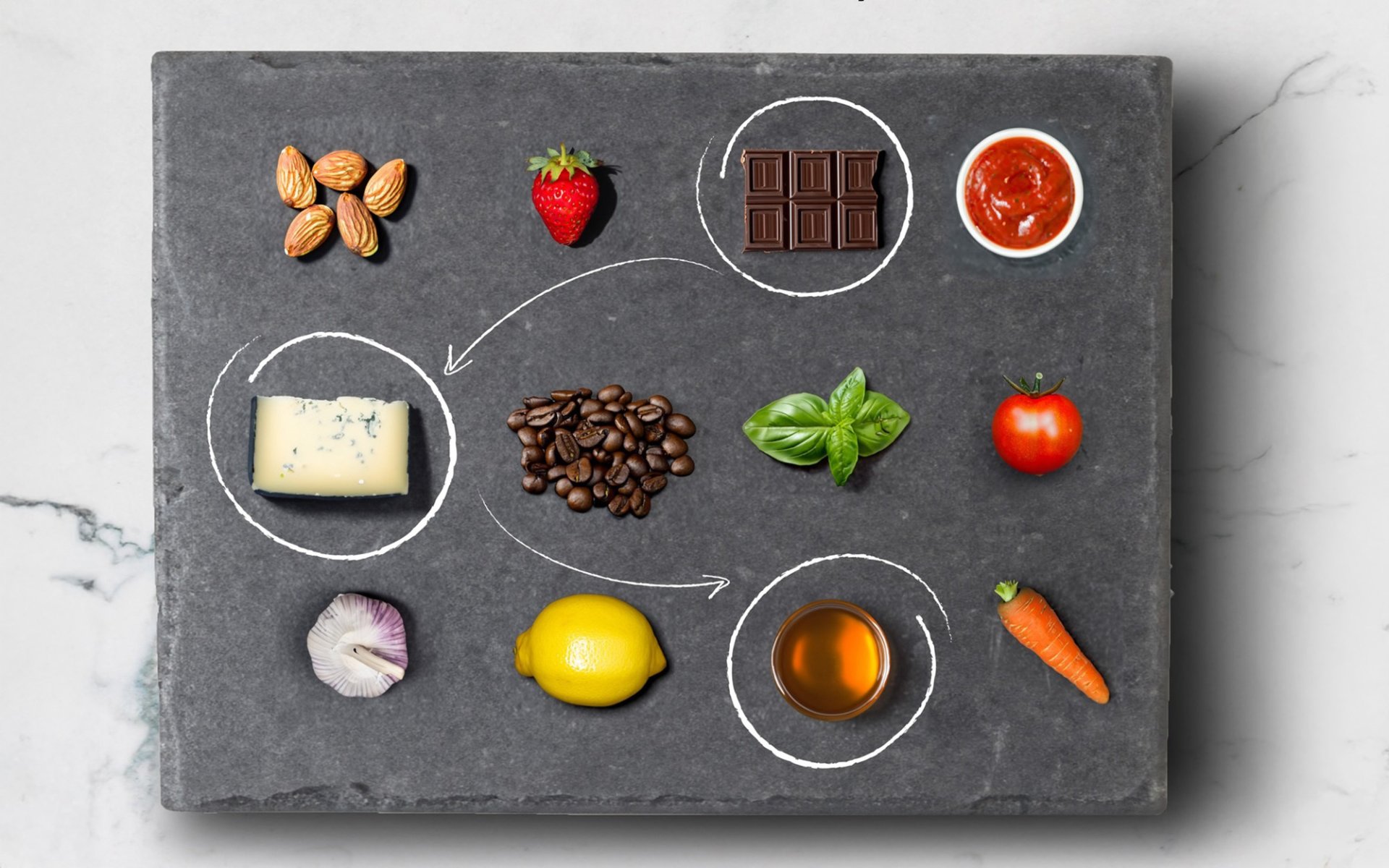Flavor pairing

Flavor pairing is a human practice that dates back to ancient civilizations, having been developed over thousands of years. Historically, humans learned to combine herbs, spices, and local produce to create dishes that not only satisfied hunger but also delighted the palate.
The History of Flavor Pairing: From Instinct to Philosophy
As civilizations advanced, so did the complexity of culinary practices. Ancient Greeks and Romans connected the concept of flavor pairing with broader philosophical ideas, for instance, pairing wine with cheese or wine with meat, as well as combining sweet and sour flavors. These concepts laid the foundation for flavor pairings that continue to this day.
The Middle Ages, a period of exploration and exchange, brought about a major culinary revolution in Europe. Royal banquets among the aristocracy began to feature various food pairings, reflecting the exotic appeal of new ingredients, such as the combination of savory meats with fruit sauces, which added new dimensions to taste.
During the Renaissance, scientific advancements expanded significantly. French chemists began to study the physiology of taste, leading to a deeper understanding of the chemistry of food and the mechanics of taste buds. This paved the way for a more systematic approach to flavor pairing.
The Science Behind Deliciousness: The Birth of Flavor Pairing
As scientific mechanisms became more accepted, chefs began to leverage this knowledge to create novel flavor combinations. This led to the emergence of the Flavor Pairing principle, pioneered by chefs Francois Benzi and Heston Blumenthal. The core idea of this principle is to use flavor molecules to determine which foods complement each other well. It suggests that foods with similar or closely related molecules will lead to delicious and harmonious tastes.
Flavor Pairing involves studying food at a molecular level, considering both ingredients and aromas, then analyzing how closely two foods relate. A famous example is chocolate and blue cheese. At first glance, these two foods might seem wildly disparate, but in reality, they share similar molecular compounds. Thus, if you visit Europe, you might find some high-end restaurants serving blue cheese and chocolate on the same plate, precisely because they are applying the principles of Flavor Pairing in their culinary creations.
Diversity and the Future of Flavor Pairing
The exchange of culinary traditions has fostered a fusion of flavors that transcends boundaries, leading to truly innovative food pairings. However, it's important to note that Flavor Pairing is not the sole answer to culinary innovation and deliciousness. It is simply one fascinating principle that can assist chefs and bartenders in inventing new dishes. The world of cuisine still holds many other theories that contribute to delicious and creative outcomes.
Today, the art of flavor pairing continues to evolve, reflecting a deeper understanding of taste, culture, and the boundless potential of human creativity. It has progressed from instinctive combinations to embrace new scientific concepts, perfectly blending both art and science.


